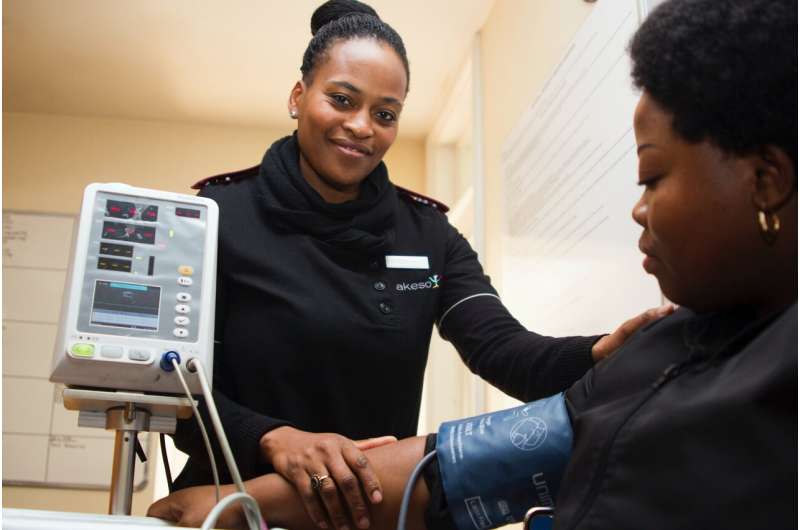
On Feb. 28, David Campbell woke up with a terrible case of vertigo.
“I couldn’t open my eyes without the room and all of the objects around me just spinning violently,” he said. “Any slight movement of my head massively exacerbated the symptoms.”
Campbell, a 58-year-old retired pharma director, couldn’t walk. He had intense nausea. He called a family member, who carried him down the steps of his Northern Liberties home and took him to Penn Presbyterian Medical Center’s emergency department.
An EKG and CT scan found nothing life-threatening. Over the course of a day and night in the ED, he got medicines that helped the nausea and dizziness, but he was still sick enough that, under normal circumstances, he would have been admitted to the hospital. Instead, he entered a clinical trial supported by Penn Medicine and Independence Blue Cross that was testing an alternative to hospitalization: going home.
As part of the Practical Alternative to Hospitalization (PATH) program, Campbell got extra support from a team headed by emergency physician Austin Kilaru. A nurse practitioner called him every day to discuss his symptoms, explain vertigo and answer his questions. The program coordinated follow-up care with his primary care doctor.
Campbell was understandably worried about his disturbing symptoms. He didn’t trust himself to decide whether he needed to go back to the hospital. He felt vulnerable, disoriented. The nurse calmed him. “I’ve not needed someone in the past to help me manage caring for myself,” he said.
After a few days, Campbell felt better. He emerged a fan of the experimental approach. “It was phenomenal,” he said. “I would imagine that, without it, the outcome would have been several unnecessary trips to the ER on my part.” That, he said, would have added cost to the health system and inconvenience for him.
Kilaru, who has a masters in health policy, initially hoped to prevent emergency department visits entirely by sending home health nurses or paramedics to the homes of sick people. That proved difficult, because those patients still needed lab and imaging tests that were difficult to deliver at home.
He changed his focus to helping emergency patients avoid hospitalization. In 2018, a quarter of patients admitted to the hospital through Penn Presbyterian’s emergency department stayed for two days or less, a sign that some had problems that could be managed elsewhere.
Working with Penn’s Center for Health Care Innovation, Kilaru and his team developed a program that would identify patients who could safely go home and coordinate the personalized support they would need for about a week once they got there. That included nursing care, lab work, transportation, medication refills, and physical therapy. Extra support has become common after hospitalized patients are discharged, Kilaru said, but he believes Penn’s emergency department program is unique.
Two pilot tests of PATH were successful. Results of one of them, which involved 30 patients, were published in April in the journal Healthcare. The most common diagnoses for participating patients were chest pain, heart failure and high blood sugar, the study found. Researchers estimated that the program reduced time in the emergency department for those patients by 8.2 hours and prevented hospital inpatient stays averaging 2.3 days. Four participants returned to the emergency department within the next 30 days.
Kilaru’s team did a larger randomized trial with 72 patients this year. Results are still being analyzed and Kilaru said he could not discuss them in detail before they are published in a medical journal. “Our results look very promising,” he said. The program itself is on hiatus now while the evaluation is underway.
Patients with COVID-19 were not included in the trial, but Penn had a similar program for those who sought help for infection in the emergency department.
COVID-19 was not on Kilaru’s radar when PATH was conceived. Even before the pandemic, occupancy at Penn Presbyterian was often high, making it important to use available space wisely and increase outpatient capacity. COVID-19 surges have only emphasized the importance of reserving hospital beds for patients who really need them.
Independence Blue Cross chose to give Penn a grant to test PATH after hearing about it during a competitive pitch day, said Rodrigo Cerdá, an internist who is vice president of clinical care transformation at the insurer. His program seeks to improve health care value, which it defines as a combination of quality, patient experience, equity and cost. “PATH was clearly one of the ones that has the most potential,” he said.
Patients generally prefer to receive care at home, he said, and COVID-19 has pushed health providers to improve efficiency. “COVID helps us sometimes to move faster because of being really careful with hospital capacity,” he said.
Cerdá said PATH’s results look “encouraging” so far. If that continues, IBC will figure out how it can change the way it pays for care at home to encourage wider use of the concept.
IBC is also interested in “hospital at home” models, which provide more complicated care at home. It is in discussions with providers, but no one is trying it yet.
Cerdá’s program this year gave five Clinical Care Innovation Grants of about $200,000 each to study ideas ranging from enhanced primary care treatment for chronic kidney disease to automated text messaging for cancer patients on complicated, at-home chemotherapy regimens.
Kilaru said that both physicians and patients accepted the idea that some could go home. “Patients loved it,” he said. “The consistent thing that amazes me is that patients really do want to be at home.”
Leslie Meeks, who was also part of the recent trial of PATH, went to Penn Presbyterian in early February with extreme gastric distress. Meeks, who would say only that she is in her “golden years,” has had short stays in the hospital before.
“You don’t get a lot of rest in the hospital, because there’s a lot of things going on all the time,” she said. “… It’s just not very quiet and calming.”
She got IV fluids and medications at home after she was stabilized at the emergency department. A nurse called every day. Meeks called once with a question. Her roommate was there to help her.
Source: Read Full Article


